Discovering the Surfing Culture of Channel Islands
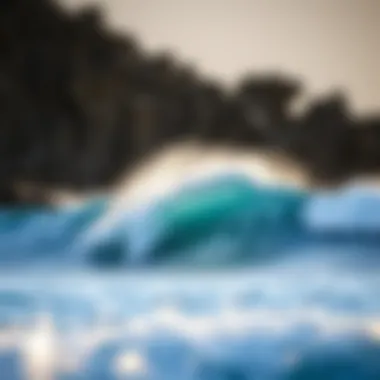
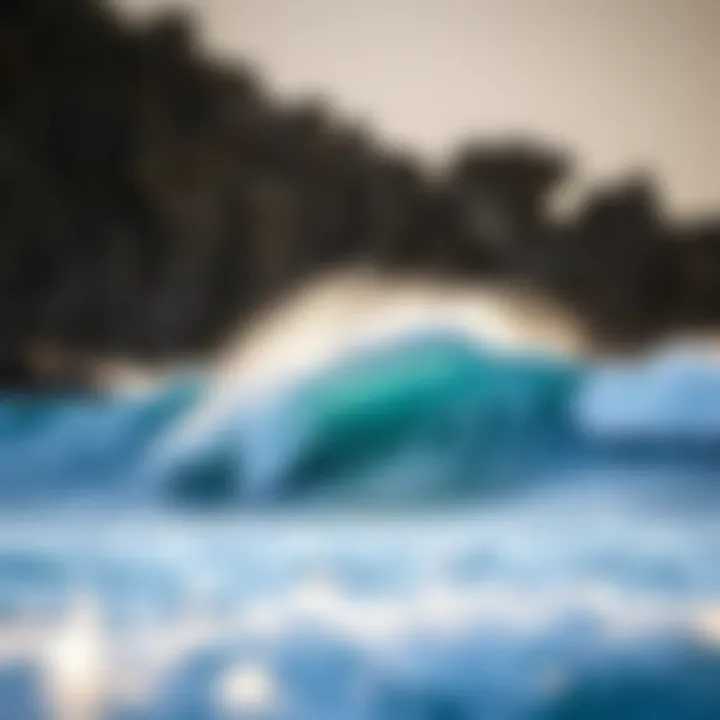
Intro
The Channel Islands, a unique cluster of islands located off the coast of California, have emerged as a prominent haven for wave riders from around the world. With their diverse landscapes and varied surf conditions, these isles offer not just thrilling waves, but an entire culture steeped in community spirit and environmental consciousness. Whether you're paddling out as a beginner or carving up serious swells as a pro, the Channel Islands provide a rich tapestry of experiences that speak to the heart of surfing. This comprehensive guide explores the elements that make the Channel Islands a bucket-list destination for those who crave the thrill of surf.
As we meander through this article, we will unravel the nuances that define the surfing scene here. From the distinctive topography that shapes each spot, to the thriving local surf culture, every aspect matters. Dive deep as we also highlight critical environmental considerations that are imperative for maintaining these pristine waters. Let's not just ride the waves; let’s understand the delicate balance between adventure and sustainability that marks the true essence of surfing in the Channel Islands.
Geographical Overview of the Channel Islands
The Channel Islands hold a unique place in the world of surfing, combining stunning landscapes with prime ocean conditions. Understanding the geographical context is key in grasping what makes this hub ideal for surfers. This section sheds light on the significant features such as location and formation, alongside climate aspects that shape the surfing experience. Each aspect not only cars out thrilling opportunities for ride enthusiasts but also reflects the ecological environment and cultural backdrop of the islands.
Location and Formation
Nestled off the southern coast of California, the Channel Islands are composed of five main islands: Anacapa, Santa Cruz, Santa Rosa, San Miguel, and Santa Barbara. The dramatic topography shaped by volcanic activity and erosion results in cliffs, coves, and sandy beaches that are interspersed throughout the islands. This geological setup plays a pivotal role in wave formation—where wave energy is funneled into coves and creates surf breaks ideal for riding.
Interestingly, these islands are not just about stunning visuals; they're also a living lab of marine biodiversity. Being less frequented than mainland beaches, the waters here offer pristine conditions. Local surfers often speak of the treasures hidden in various nooks and crannies that can turn an average surf day into an adventure, full of unexpected moments.
Climate and Oceanography
The climate of the Channel Islands is mostly Mediterranean, characterized by mild, wet winters and warm, dry summers. During summer months, trade winds provide consistent and favorable conditions, allowing surfers to catch waves at various spots. This season is often regarded as peak surfing time; however, the winter months can offer swells that are larger and more challenging - appealing to experienced surfers looking for a thrill.
Ocean Conditions
Located in the Pacific Ocean, the Channel Islands benefit from ocean currents that bring nutrient-rich water, fostering marine life and creating dynamic surf conditions. The swell direction can vary widely, influencing wave behavior. Surfers who understand these nuances can plan their sessions accordingly, providing a better chance to snag solid waves.
"Riding the waves feels like dancing with nature, but knowing how to read it is key. The Channel Islands offer a unique classroom for learning the rhythm of the ocean."
In summary, the Channel Islands provide not just a stunning geological spectacle but an exceptional surfing environment shaped by favorable climates and complex ocean dynamics. Engaging with this local geography forms the cornerstone of an unforgettable surfing experience—offering both thrills and a unique connection to nature.
Surfing Conditions in the Channel Islands
The Channel Islands are not just pretty faces in the ocean; they're a veritable playground for surfers. The surfing conditions here are defined by a unique blend of geography, ocean currents, and seasonal variations that come together to create an ideal environment for both experienced riders and newcomers to the sport. Understanding these conditions is paramount for anyone looking to catch the perfect wave.
Wave Patterns and Swell Directions
When it comes to surfing, waves are the lifeblood of the sport. In the Channel Islands, wave patterns are influenced by a variety of factors including wind, tides, and ocean currents. The swells that reach the shores of these islands are predominantly generated from the North Pacific. With directions typically coming from the northwest, surfers can expect consistent swells that are both challenging and rewarding.
Key Elements of Wave Patterns:
- Northwest Swells: The dominant swell direction, providing powerful waves ideal for surfing.
- Tide Variability: Understanding low and high tides is crucial; they can significantly alter wave shape and intensity.
- Wind Impact: Offshore winds can groom the waves, creating cleaner faces for riding, while onshore winds can make for a choppy experience.
In practical terms, knowing when to take to the water means keeping an eye on forecasts and understanding local conditions. Many seasoned surfers will tell you that it’s not just about catching waves, but about timing your entrance into the ocean.
Following reports from local surf forecasts, such as those available on Surfline or Magicseaweed can greatly enhance your chances of having a stellar session. “Timing is everything,” as they say in the surf community.
Seasonal Variations in Surfing
Surfing in the Channel Islands is far from static; the seasons bring a fluctuation in both wave quality and access. Typically, the best waves occur during the winter months, when storms in the North Pacific generate bigger and more powerful swells. On the flip side, summer tends to offer smaller, more manageable waves, making it an excellent period for beginners to hone their skills.
Important Seasonal Insights:
- Winter (November to March): Ideal for experienced surfers looking for big swells.
- Spring (April to June): Transition phase with increasing wave size and more favorable winds.
- Summer (July to September): Smaller, fun waves perfect for novices and casual surfers.
Surfers should keep in mind that weather patterns can shift, and unexpected fluctuations can occur. Being attuned to these seasonal changes not only enhances the surfing experience but also deepens the connection with the ocean. Surfers often say that the waves have their own rhythm, and learning to read that rhythm will lead to a more fulfilling surfing adventure.
"Surfing is like life. It's all about timing and balance.”
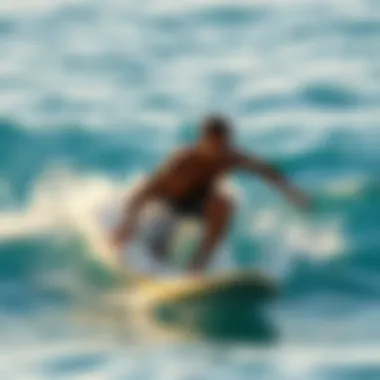
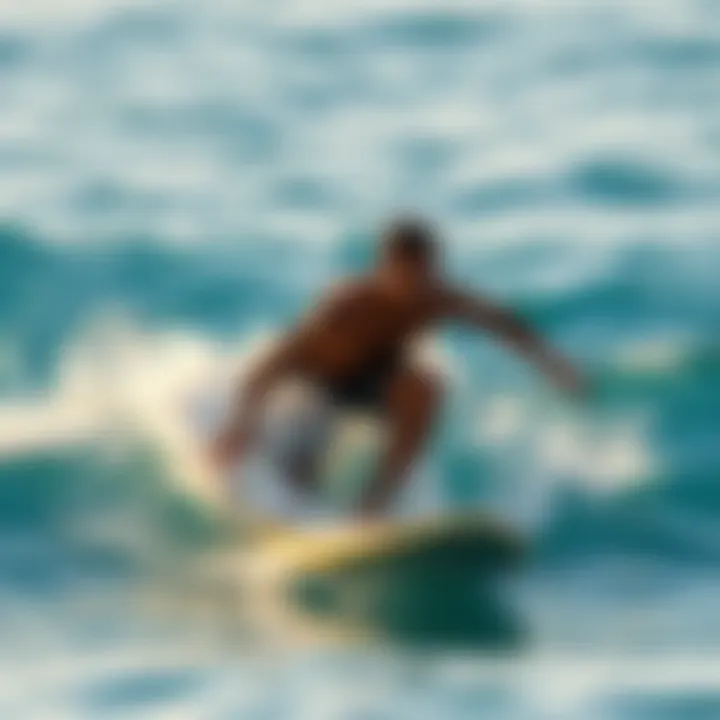
For further details on weather patterns and updates, sites like NOAA or local surfing forums on platforms like Reddit can be invaluable for knowledge and community engagement.
Notable Surf Spots in the Channel Islands
The Channel Islands are not just a paradise of scenic beauty; they present a vibrant tapestry of surf spots that cater to all levels of surfers. Understanding these surf spots is crucial for any audience seeking a deep dive into the surfing culture that thrives here. Each location offers unique challenges, varying wave conditions, and distinct vibes, making them significant for both thrill-seekers and seasoned surfers alike. When surfers gather to ride these waves, it transforms into more than just a sport; it’s a cultural experience, steeped in camaraderie and a connection to nature.
Surfing at Santa Cruz Island
Santa Cruz Island, the largest of the Channel Islands, boasts some prime surf locations that draw in surfers from far and wide. Known for its rugged coastline and consistent swell, it’s a backdrop where adventure meets awe. The waves here tend to cater to all skill sets, with spots that range from mellow beach breaks for beginners to challenging reef breaks for the more experienced.
Key points about surfing here:
- The eastern side of the island often sees favorable wind conditions, which makes for standout waves.
- Seasonal swells can vary significantly; late summer is known for more gentle waves, while winter brings heavier, more powerful surf.
- The breathtaking scenery offers an unforgettable ride, with cliffs and wildlife framing the experience. It's like surfing in a postcard.
For those looking to escape the crowds, Santa Cruz Island's remote nature means you might just find yourself riding waves with a handful of others. That exclusivity, coupled with natural beauty, makes it a top pick for both surfers and nature lovers.
Exploring San Miguel Island
San Miguel Island is often overlooked but provides raw, untamed surfing experiences. It’s wind-swept and rugged, which creates a unique environment for surfers ready to tackle the elements. The island hosts some powerful surf spots, particularly along its southern coast.
What's notable here is the natural terrain that influences wave formation. On a good day, surfers can expect:
- Fast, hollow waves that can be quite challenging, ideal for those who want to push their limits.
- Less commercialization means a more authentic surf experience. Don’t be surprised if you find yourself sharing the waves with seals and sea lions!
- The surrounding blue waters and untouched landscapes add to the thrill, making every wipeout worth it, even if it's just for the bird's-eye view.
Consider this: the isolation and wild beauty of San Miguel Island make it an adventure in every sense. This is a place where surfers can reconnect with the ocean and enjoy the natural world far away from urban distractions.
Surf Breaks at Anacapa Island
Anacapa Island, divided into East and West Anacapa, is perhaps one of the more unique surf spots in the Channel Islands. With prominent cliffs and picturesque sea arches, this island isn’t just a feast for the eyes—it’s also home to fantastic surf conditions.
Surfers often rave about the following features:
- Multiple breaks, allowing surfers to choose their wave, whether they prefer a long, rolling ride or steep drops.
- Consistent swells year-round, but winter offers some of the best waves, drawing advanced surfers looking for a challenge.
- The island’s environmental status as part of a National Park means that the waters are generally clean and teeming with marine life.
Although access can be tricky, with boat rides required to reach the island, the effort is undoubtedly rewarded. Surfing at Anacapa can feel like discovering a hidden gem—where every wave is a new adventure and each session a celebration of nature’s beauty.
"Surfing isn't just about the ride; it's about the journey to the wave, the connection to the sea, and the friendships forged along the way."
The Channel Islands indeed house some remarkable surf spots that contribute greatly to the overall surfing culture. From Santa Cruz's accessible waves to San Miguel's adventure-filled experience and the pristine conditions of Anacapa, each spot provides surfers with its unique charm and challenges.
The Surfing Community
The surfing community in the Channel Islands is not just a collection of individuals riding waves; it's a vibrant tapestry woven from shared experiences, local lore, and a deep-seated love for the ocean. This aspect of surfing isn't often highlighted in conventional travel narratives, but it plays a crucial role in shaping the culture and identity of surfers here. The community fosters connections among surfers of all skill levels, highlighting camaraderie, mentorship, and a mutual respect for the surf and its environment.
One of the most compelling elements is the way local surfers pass down their knowledge through stories. Whether it’s recounting epic swells or imparting safety tips to newcomers, these exchanges solidify community bonds. By celebrating local heroes and discussing their achievements, surfers inspire one another, creating a rich legacy that feeds into the dynamic culture surrounding the sport.
Adventurers visiting the Channel Islands not only enjoy the thrill of the waves but also have an opportunity to engage with the community. Events such as surf competitions and beach clean-ups are staples that draw locals and visitors alike. This involvement helps to reinforce the notion that surfing is more than a sport; it's an integral part of life that unites people. Moreover, when thrill-seekers join in these initiatives, they contribute to the preservation of the pristine environment while immersing themselves in the local ethos.
While surfing here is undoubtedly enjoyable, there is also a measured awareness of the various challenges that the community faces. Issues like overcrowding at prime spots and environmental degradation bounce around conversations like a well-worn beach ball. Surfers are increasingly advocating for responsible practices that ensure the health of the ocean and minimize their footprint. This awareness speaks volumes about the maturity within the surfing community in the Channel Islands.
Histories of Local Surfers
Every local surfer has stories that reflect their personal journey on the waves. These narratives often start with early morning sessions, where the sun is just peeking over the horizon and the ocean is still quiet, save for the gentle lapping of water against the shore. For instance, there are tales of a fine surfer named Jake, who, as a child, spent almost every weekend navigating the surf alongside his father. Years later, Jake becomes a respected member of the community, known for both his skills and his willingness to help others. These stories resonate deeply, showing how surfing can shape and define lives.
Moreover, the world of surf is a fluid one, often influenced by trends of the time. For example, in the late 20th century, when big wave surfing began to gain traction, it transformed the surfing landscape in the Channel Islands. Surfers developed a zest for tackling giant swells, pushing their limits, and redefined the boundaries of what's possible in the water. This evolution has not only solidified surfing's role here but has also attracted a diverse crowd who share differing perspectives and styles.
Cultural Practices and Traditions
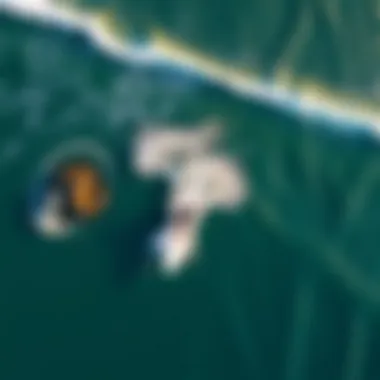
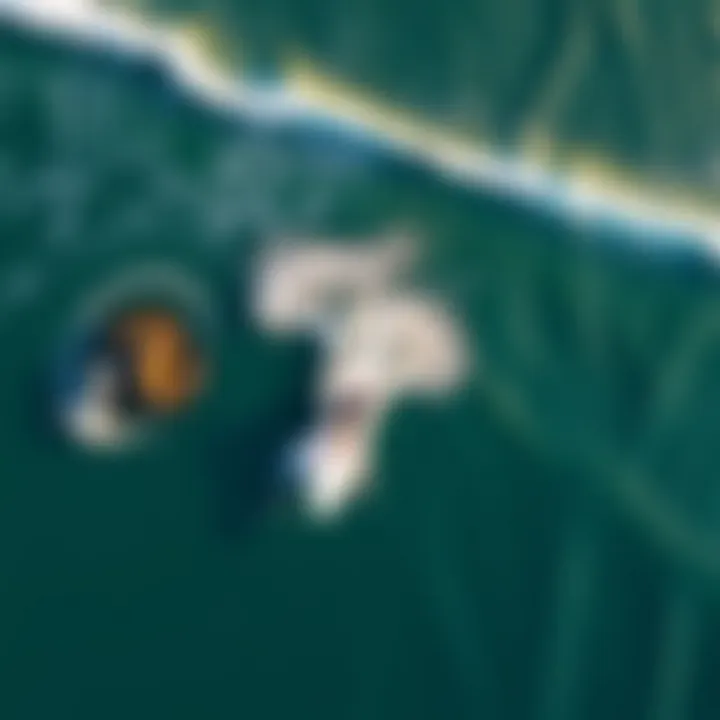
The cultural practices surrounding surfing in the Channel Islands are both rich and varied. With a blend of influences from Polynesian heritage and modern surfing innovations, the customs foster a spirit of unity and respect for nature. One such practice is the "paddle out" ceremony, often conducted to honor fallen surfers or local icons who have passed away. This solemn gathering sees surfers paddling out together, forming a circle in the ocean to pay their respects. It exemplifies the profound bond shared within this community, transcending beyond mere sport into something far more meaningful.
Another intriguing aspect is the annual surf festival, which draws surfers from all over. This event celebrates not only the art of surfing itself but also various surf-related art forms, from photography to music. During the festival, art installations inspired by the ocean can be spotted alongside competitions, local food, and craft stalls. It encapsulates the essence of the community—celebrating the intersection of art, sport, and local culture.
"Surfing is not just about riding waves; it's about riding life together."
For more insights on local initiatives and surfer backgrounds, check out resources like Wikipedia and Britannica.
Whether you're a novice or seasoned pro, diving into the local surf culture enriches the overall experience, providing a valuable context to the thrilling endeavors on the water.
Environmental Impact of Surfing
Practicing a sport like surfing in the Channel Islands is both thrilling and deeply intertwined with the environment. Surfing, known for its exhilarating experience, holds significant implications for the fragile ecosystems present in this unique locale. With waves crashing and the sound of surfboards slicing through water, one can't help but be captivated. However, as we enjoy these beautiful waves, the environmental impact of our sporting passion cannot be ignored. Recognizing the positive and negative interactions between surfers and their surroundings is crucial for maintaining this natural beauty for future generations.
Erosion and Conservation Challenges
The delicate balance of the coastlines and the surrounding marine environment is constantly changing, largely due to human activities. Erosion poses a significant challenge in the Channel Islands, impacting both the underwater landscapes and the surf conditions. Surfers often visit some of the more popular beaches, which leads to an increase in foot traffic. This can exacerbate erosion, stripping away sand and altering the natural topography.
Additionally, surf spots can quickly become overcrowded during peak seasons, which not only affects the quality of the surfing experience but may also trigger further environmental degradation. This leads to a painful irony where the very waves surfers love are threatened by the actions of those enjoying them.
Conservation efforts become paramount in this scenario. Organizations such as the Channel Islands National Park promote awareness and proactive measures to address erosion. They encourage surfers to adhere to designated paths and avoid sensitive areas to minimize their ecological footprint. A community that prioritizes conservation can sustain what makes these islands remarkable not just for themselves, but for future adventurers as well.
"Only when the tide goes out do you discover who's been swimming naked." – Warren Buffett
Sustainable Surfing Practices
Adopting sustainable surfing practices is essential for preserving the integrity of the Channel Islands. Surfers have a unique role in this endeavor. Simple changes in behavior can help mitigate some of the adverse effects associated with the sport.
Here are some essential sustainable practices for surfers:
- Choose eco-friendly equipment: Opting for surfboards made of sustainable materials reduces our dependence on harmful chemicals and fossil fuels.
- Minimize plastic use: Using reusable bottles and bags, and avoiding single-use plastics, can significantly reduce waste on the beach and ocean.
- Participate in local clean-up efforts: Joining or organizing beach clean-ups can help maintain litter-free beaches and preserve marine life.
- Educate others: Sharing knowledge about environmental responsibility within the surfing community fosters a culture of sustainability that can ripple through the waves.
Being mindful in every aspect of the surfing experience—from equipment choices to waste management—forms a collective effort toward environmental stewardship. Each surfer can play a part in protecting the delicate ecosystems that provide the backdrop for their passion, ensuring the beauty of the Channel Islands endures. By embracing these sustainable practices, surfers can create a legacy of respect for the ocean, demonstrating that adventure and conservation can coexist harmoniously.
Surf Equipment and Innovations
The world of surfing revolves around an intricate dance between rider and wave, and this interaction is profoundly influenced by the equipment surfers choose. In the context of the Channel Islands, the right surf equipment is not simply a matter of preference; it's a decisive element that impacts performance and safety. With unique surf conditions found in this region, high-quality and specifically tailored gear can mean the difference between a memorable ride and a crash that leaves one in a less than favorable situation.
Boards Tailored for Channel Islands Conditions
When it comes to surfboards, understanding the nuances of the Channel Islands oceanic landscape is crucial. The diverse range of waves—from powerful reef breaks to mellow beach breaks—demands boards that cater to each unique situation. For instance, if a surfer aims to tackle the renowned waves at Santa Cruz Island, a shorter, more maneuverable board might be preferred to allow for agility in the surf. Conversely, at San Miguel Island, where the surf can be more challenging and demanding, a longer board might lend itself better to stability and endurance.
Materials also play a significant role in performance. Modern surfboards are typically made from lightweight materials like epoxy or foam, enabling surfers to maintain speed while navigating through shifting wave patterns. Moreover, the shape and fin setup can impact how a board performs in different surf conditions. Thus, selecting the right board isn’t just about aesthetics; it’s about understanding how each element functions in harmony with the water.
"Choosing the right board can transform the surfing experience completely. It's not about the style; it's about the ride."
Wetsuits: Selecting the Right Gear
Given the sometimes chilly waters around the Channel Islands, having the right wetsuit is essential for comfort and performance. Surfers know well that feeling warm directly correlates with being able to enjoy the ride, rather than shivering through it. In this context, the thickness, material, and fit of wetsuits become paramount.
A 3/2mm wetsuit is often suitable for the milder months, providing insulation without compromising flexibility. On chillier days, a 4/3mm wetsuit may be necessary to ward off the cold and allow for longer sessions in the water. Furthermore, the type of wetsuit—whether a full suit, spring suit, or shorty—can depend on the specific surf conditions and personal preference.
Fit is another crucial consideration. A well-fitted wetsuit allows for a full range of motion while minimizing water entry, keeping surfers warm and agile. Socks and gloves can also add a layer of warmth, particularly for those chilly morning or evening sessions. Ultimately, selecting the right wetsuit is as essential as choosing the right surfboard; it gives the confidence to take on whatever the Channel Islands’ waves may offer.
As surfers around the globe continue to innovate and customize their gear, embracing new technologies and designs relevant to the Channel Islands will allow for a surfing experience that remains thrilling and sustainable.
Safety in Channel Islands Surfing
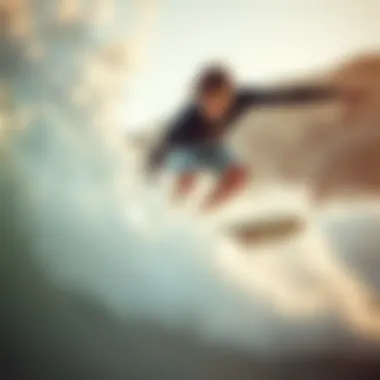
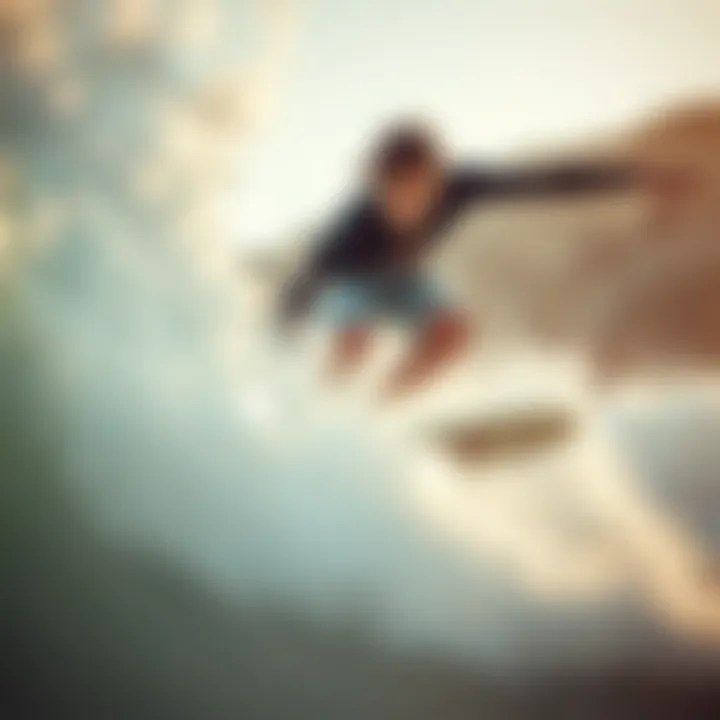
Surfing in the Channel Islands brings an unmatched thrill, but with great waves comes great responsibility. Understanding safety in this vibrant surfing scene is as crucial as mastering the perfect carve. The Channel Islands, with its unique geographical features and ever-changing ocean conditions, present specific challenges that surfers must navigate. Here, we explore the significance of safety protocols and emergency procedures that ensure surfing remains an invigorating, yet safe, activity.
Understanding Safety Protocols
Before even stepping on a board, surfers should be well-versed in safety protocols. These guidelines play a pivotal role not just in protecting oneself, but also in fostering a communal sense of care among all water adventurers. Here are some critical protocols to keep in mind:
- Check Conditions: Always monitor wave heights, currents, and weather patterns. Websites like surfline.com or local news stations offer up-to-date information about surf conditions.
- Buddy System: Surfing with a partner enhances safety. You have someone to rely on in case of an emergency. It’s not just about company; it's about having someone who can signal for help if needed.
- Awareness of Other Surfers: Respecting fellow surfers’ right of way is paramount. Not only does it prevent collisions, but it also nurtures camaraderie in the surf community.
- Know Your Limits: Acknowledging personal skill levels and avoiding overly challenging waves can prevent accidents. Surfers, be honest about what you can and cannot handle.
By adhering to these essential protocols, surfers can enjoy their time on the water with increased confidence and reduced risks.
First Aid and Emergency Procedures
Despite all precautions, accidents can happen. Being prepared with first aid knowledge and emergency procedures can turn a potential disaster into a handled situation. First aid kits should always be on hand, and familiarity with their items is vital. Here’s some advice:
- Basic First Aid Kit: Make sure you have a kit that includes bandages, antiseptics, and any personal medications for allergies or conditions like asthma.
- Learn CPR: Enroll in a local CPR or first aid training course. It’s an invaluable skill that can save lives in case someone gets knocked out by a wave or injured in a collision.
- Emergency Contacts: Before heading to the surf, jot down emergency contacts and have them handy. Local coast guards or rescue services should also be in your contact list.
- Recognizing Signals: In case of a distress signal, know what to watch for. A waving arm or an individual shouting indicates trouble and requires immediate action.
Emergency Procedure Tip: In case someone is in distress, prioritize the safety of yourself and others. If someone is caught in a rip current, it’s often better to swim parallel to the shore rather than directly against the current.
By equipping yourself with first aid skills and understanding emergency protocols, surfers can transform their knowledge into action when it's needed the most.
Future of Surfing in the Channel Islands
The surfing scene in the Channel Islands stands at a crucial crossroads, with the future shaped by a multitude of factors. The evolution of surfing here isn’t just about catching waves; it encompasses cultural, environmental, and technological changes that will define the islands' position in the global surfing community. Understanding these trends is vital, not just for the thrill-seekers and surfers aiming to hit the pristine beaches, but also for the local communities that rely on these waters for their livelihoods.
Trends in Surfing Development
In recent years, there's a noticeable shift in surfing trends within the Channel Islands. Emerging technologies in surfboard design and materials play a pivotal role. For instance, eco-friendly surfboards made from sustainable materials like hemp and recycled foam are gaining popularity. This trend allows surfers to pursue their passion without leaving a significant carbon footprint. The demand for lighter, more buoyant boards reflects surfers' desires to enhance performance while being environmentally keen.
Moreover, new wave forecasting technologies have made it possible for surfers to track conditions more accurately, streamlining their trips and maximizing time spent in the water. With mobile applications providing real-time data on swell heights, wind conditions, and tide movements, surfers can plan their outings with pinpoint accuracy—or so they think. But we both know that, once in the water, nature always has its own say.
Lastly, the growth of big wave surfing competitions in the region has drawn attention to the Channel Islands, positioning them as a key hub for adrenaline junkies around the world. Events not only foster local talent but also bring tourism, which can be a double-edged sword. More visitors can lead to increased environmental stress if local communities are not careful.
Community Initiatives for Sustainability
As surfing becomes more popular, so does the need for robust sustainability initiatives among local communities. Groups like the Channel Islands Surfing Association focus on promoting eco-friendly practices among surfers and the broader community. Initiatives include beach clean-up events, where surfers come together to not only hit the waves but also maintain the pristine beauty of the coastline. This not only helps the environment but also fosters a sense of camaraderie among surfers.
Programs promoting surf education are also on the rise. Local surf schools now incorporate lessons on ocean conservation into their curricula, teaching students not only how to ride the waves but also how to protect the waters they love. This holistic approach ensures that future generations of surfers understand their responsibility towards the environment.
Moreover, collaborations with governmental bodies aim to create regulatory measures that protect local ecosystems. Initiatives to monitor water quality and safeguard marine habitats demonstrate a commitment to sustainability, which is critical for maintaining the Channel Islands' unique surfing culture.
In wrapping this up, the future of surfing in the Channel Islands is promising yet comes with its challenges. Trends in surfing development and community initiatives for sustainability illustrate a potential path forward—not just for surfers looking for the next big wave, but also for the local oceans and ecosystems that play a vital role in the surfing experience. Careful navigation through these waters will ensure that the breathtaking beauty of the Channel Islands continues to inspire and provide for all who seek solace and adventure in its waves.
The End
The closing remarks on the multifaceted surfing paradigm in the Channel Islands not only wrap up the important insights shared throughout the article but also underscore the relevance of each discussed aspect. As surfers navigate these picturesque waters, understanding the interplay between geography, culture, and environmental issues becomes more than just an academic pursuit—it’s a call to appreciate and protect these unique ecosystems.
Summation of Key Insights
Surfers, both seasoned and new, find something special in the Channel Islands. The juxtaposition of wave conditions, stunning seascapes, and a tight-knit surfing community creates an atmosphere ripe for exploration. Key points that surfaced through our exploration include:
- The geographical diversity and its role in shaping surf conditions across different islands.
- Unique historical narratives that contribute to the rich cultural tapestry of surfing in these waters.
- The palpable tension between surfing activities and environmental conservation, emphasizing sustainable practices.
Together, these insights paint a vivid picture of the surfing experience here, highlighting both the thrills and responsibilities that come with riding the waves.
Final Thoughts on the Channel Islands Surfing Scene
As the sun sets behind the waves, it becomes clear that surfing in the Channel Islands transcends mere sport; it embodies a lifestyle intertwined with environmental stewardship. Surfers here are not just riding the waves—they’re champions of a movement that prioritizes the conservation of marine habitats. Balancing adventure with responsibility is not just a catchy phrase, but a guiding principle that will shape the future of this sacred surfing ground.
When one stands on the beaches of Santa Cruz or San Miguel Island, it becomes evident that the call to action is loud and clear: respect the ocean, honor the community, and surf with a conscience.
"A surfer’s heart is forever linked to the sound of crashing waves and the whispers of the wind. We are bound to the ocean’s fate, and thus must tread carefully on its surface."
For more information on surfing and environmental practices, check out resources from National Oceanic and Atmospheric Administration or visit the Surfrider Foundation for advocacy on beach and ocean conservation.







